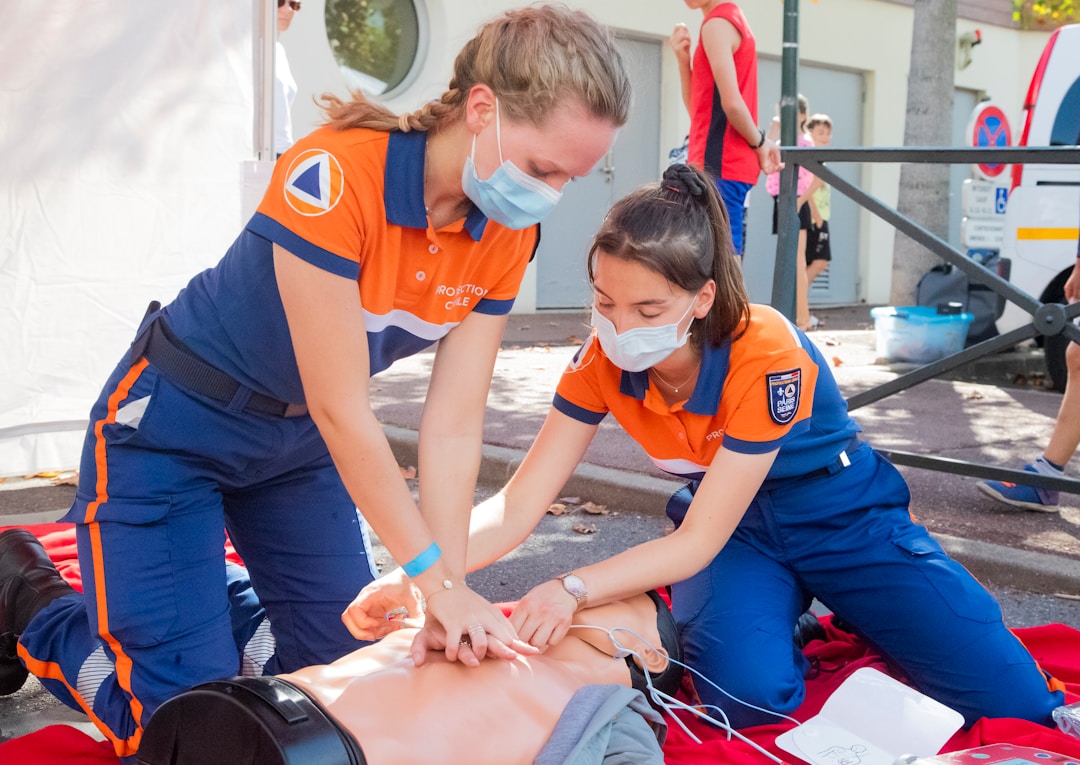

You won’t need to know CPR if you aren’t in the medical field, right? Well, to answer that question, you need to only look at the fact that more than 350,000 people each year in the United States suffer from some form of cardiac arrest. It’s hard to imagine ever having to use CPR on a person to save their lives. The prevalence of sudden cardiac events, however, has made this scenario much more likely.
CPR certification is probably the responsible choice if you’re working around other people or involved in any social activities. However, today many employers, even in the non-medical fields, require CPR and first aid certification for all employees. More and more industry leaders are beginning to recognize the importance of this life-saving training.
The Occupational Safety and Health Administration says that employers should have people at the workplace trained to render CPR and first aid in the absence of an infirmary, hospital, or clinic. Cardiopulmonary resuscitation can mean the difference between life and death in a medical emergency. Even in the short time that it takes for medical personnel to respond, early CPR can make all of the difference. While not all places of employment mandate CPR certification, it is becoming the standard rather than the exception. Let’s take a look at CPR certification in the workplace.


CPR certification for all employees can save lives. This is the foremost benefit of workplace mandates. Across the world, more people die each year from cardiac arrest than from car accidents and even certain cancers. With such staggering numbers, it makes sense that as many people as possible in the workplace should be equipped with this life-saving certification.
It’s evident that healthcare providers and medical professionals would be trained and certified in CPR, however, factory workers, construction workers, teachers, and others who work in congregate settings should be just as equipped. CPR training can save lives and improve workplace safety.
Unless your employer specifically requires certification, you don’t have to have CPR training for employment. Doing so, however, creates a safer work environment and gives peace of mind to all stakeholders. Should a medical event occur at a grocery store or on the factory floor, would anyone be around to assist until help arrives? A simple online course for all employees could ensure that there will always be help available. There are courses and training materials for AED certifications, First Aid certification, and bloodborne pathogens certification to ensure even safer workplaces.
While CPR classes are beneficial in the workplace, the training goes beyond the office walls. Employees that are armed with basic life support training carry it wherever they go. If you receive CPR and basic first aid training from your employer, you will then be able to step in during an emergency at the park or in the convenience store if you have to. Learning CPR helps the whole community.


Again, unless an employer mandates certification, you don’t have to have it for employment. There are several non-medical careers, however, where certification would be helpful. CPR and first aid training are most beneficial in congregate settings and jobs where there are inherent risks. Employees such as prison staff, construction workers, flight attendants, secretaries, and managers should seek a CPR course.
Even if it’s not required, it would be helpful to have the skills and training since you have contact with many people throughout the day. Additionally, CPR skills will be beneficial in jobs that require you to supervise or take responsibility for others, such as teachers, coaches, daycare workers, and security guards. Being able to step in during an emergency could save a life.
Studies show that only about 54 percent of Americans know how to perform CPR. However, the U.S. workforce is estimated to be made up of over 164 million people. While CPR certification might not be required for employment, it makes sense that staff members would want to get this life-saving training.